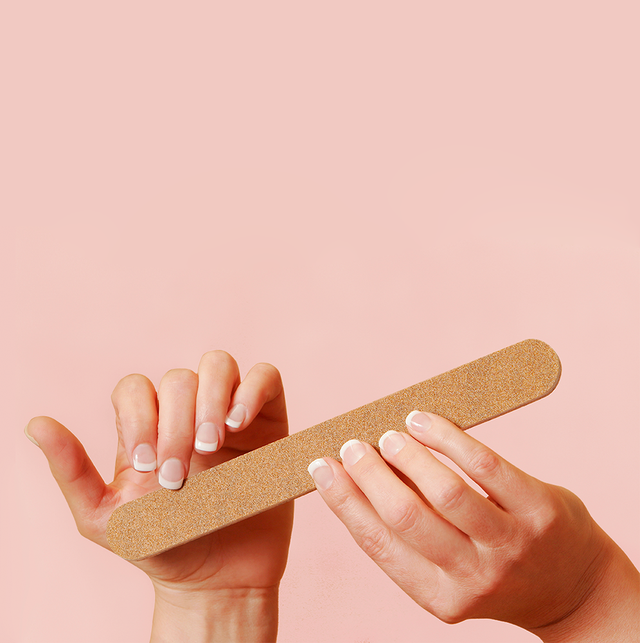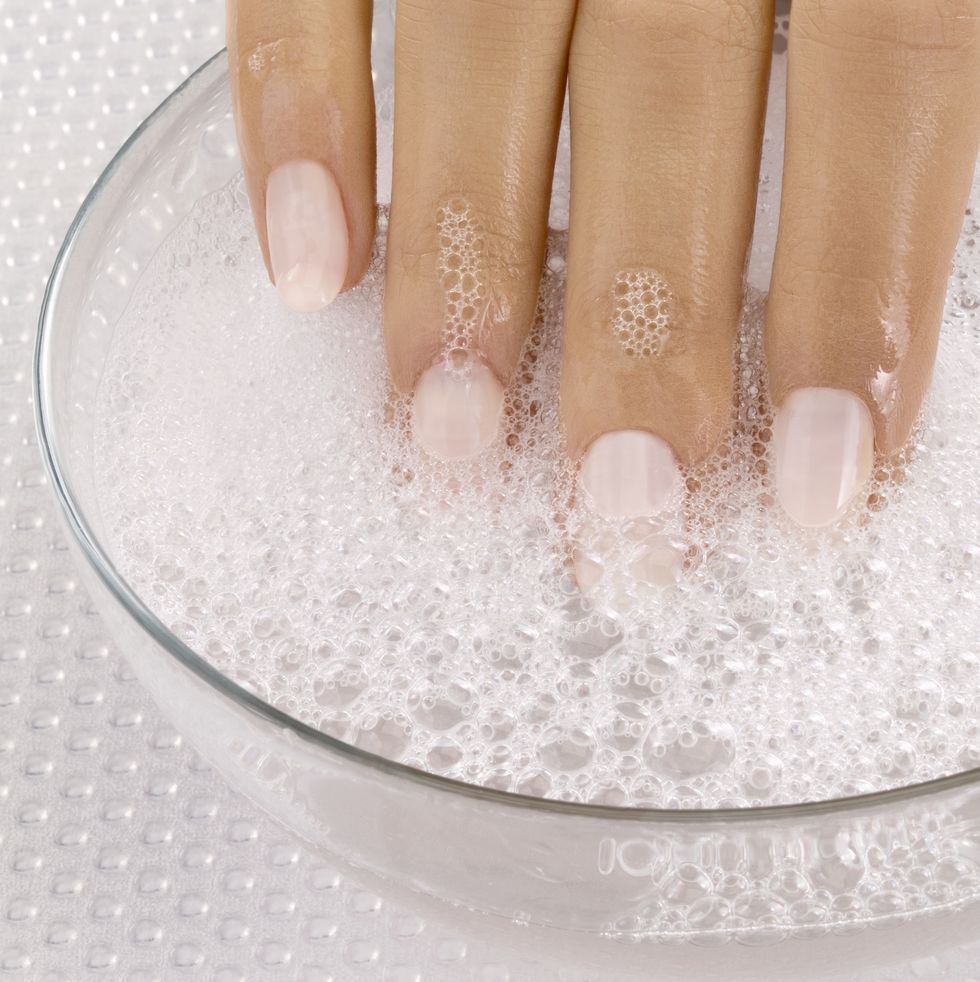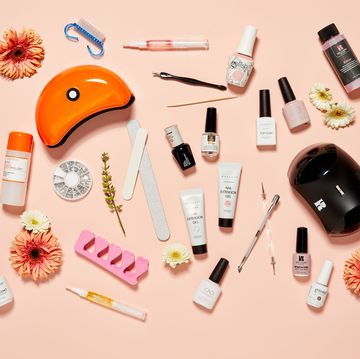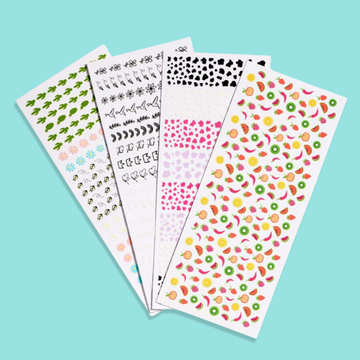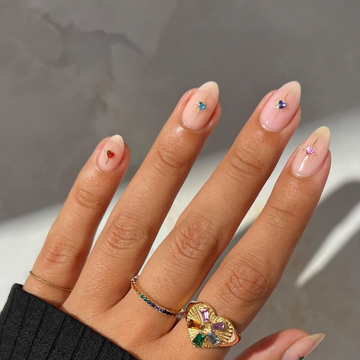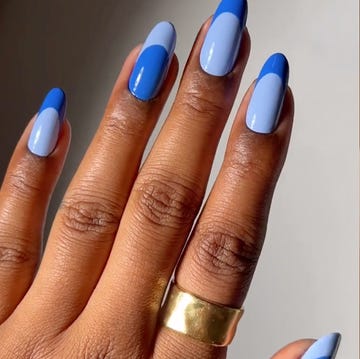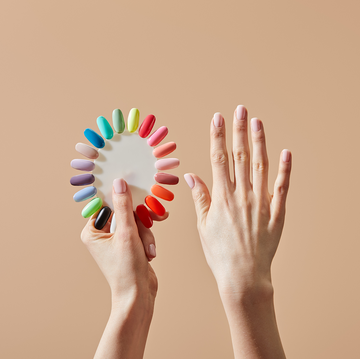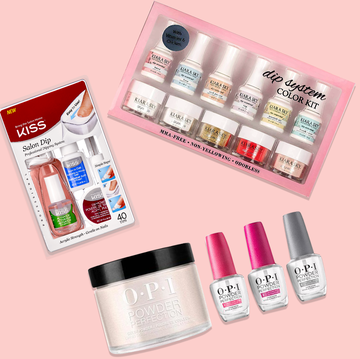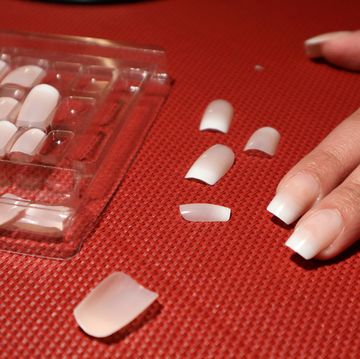Getting fresh acrylic nails feels like a treat. But the not-so-fun part? The removal process. Seeing a pro can take time and money, but picking them off yourself can lead to serious damage to your natural nails. Luckily, there are ways to take off your acrylic nails quickly and easily at home, and there’s even an acetone-free option too.
Unfortunately, removing acrylics forcefully means removing some of the many layers of your natural nail plate, too, according to professional nail artist Savannah Walker. "This usually results in thin, flimsy, damaged nails, which last for months until they grow out," she says. And that's the best possible scenario! So, if you choose to wear acrylics, we suggest keeping this handy tool kit:
How to remove acrylic nails at home with acetone
Keep in mind, even if you follow these four steps, you may be left with somewhat compromised natural nails, depending on how the technician applied the acrylics in the first place and how carefully you execute the removal. However, "if the acrylic process is done patiently, it can be virtually damage-free," Walker says. Now, follow these simple steps from nail pros to take acrylics off fast, avoiding as much damage as possible:
1. File off as much of the acrylic nail as possible
Instead of filing your nails in the usual way (along the top edge of the nail), you'll need to thin out the entire area the acrylic covers. "Using a coarse grit file, file off as much of the acrylic product as possible," Walker says. "You need a really good file for this; an emery board would be useless."
Anastasia Totty, a LeChat Nails Educator in Saint Johns, Florida agrees. "This will remove any top coat, gel polish or nail art making it easier for the solution to penetrate the enhancement," Totty explains. Look for a 100-grit nail file, which is coarse enough to file down the surface of the acrylics, or a nail drill.
Pro safety tip: "Be careful not to cut the skin around the nails with the edges of the file," Walker advises. "Always 'season' a new file by using another file over the edges to soften them."
2. Soak off any remaining acrylic nail
Once the acrylic has been filed down much as possible, Walker recommends soaking the nails in 100% acetone nail polish remover for as long as it takes to dissolve the product.
There are two ways to do this. One method is to place an acetone-soaked piece of cotton over each nail, then wrap each fingertip in foil, according to Walker, calls this "the superior technique."
Otherwise, you can try soaking fingers in a bowl of acetone. It's simpler, but "the bowl technique is very harsh on your skin and takes longer," Walker notes. If you do go this route, "only dip your nail tips in the bowl to avoid drying out the skin on your fingers and hands," says former Good Housekeeping Institute Beauty Lab Director Birnur Aral, Ph.D. She adds that you should only use acetone in a well-ventilated area, because it is very volatile and can easily irritate your respiratory system.
3. Gently scrape or buff off the last bits of acrylic
After soaking in acetone, check nails "every 20 minutes or so to scrape off the softened acrylic using an orange stick or cuticle pusher, repeating this process until all the product has been dissolved," Walker says.
There may be a few small areas of acrylic that remain, but don't get rough with them! "If there are any little bits of acrylic that won't budge, a soft foam nail buffer can be used to buff those little stubborn bits smooth," Walker adds.
4. Protect your nails from future acrylic damage
Acrylic isn't necessarily bad for nails, but it can take a toll on natural nails. For acrylics devotees, try to take a weeklong break from them every month so your nails' health doesn’t completely dwindle. During that time, brush on one coat of a strengthening nail treatment every day to prevent breakage.
To give them an even more intensive treatment, “cover your nails with cuticle oil and cuticle cream, then wrap each hand in a warm washcloth for five minutes,” says celebrity manicurist Deborah Lippmann, and nail polish entrepreneur. The result: shinier, stronger nails.
How to remove acrylic nails at home without acetone
You can remove acrylic nails without acetone using an acetone-free nail polish remover as a soak-off solution.
The steps to remove acrylic nails at home without acetone is pretty much the same process. But know that "if you wish to avoid acetone, it will take longer to remove acrylics," Totty explains.
She advises to start with trimming the extra length of the enhancement using nail clippers to cut down on the soaking time. After that, simply repeat steps 1 through 4 from the list of directions above. "Be patient and don’t scrape or peel any of it if it’s not soaked enough," Totty says.
Additionally, if you have acrylic left on nails, wrap them again using more of the remover. Lastly, you'll want to use the file to shape your nails, gently buff if necessary, and wash hands to remove any remaining solution.
